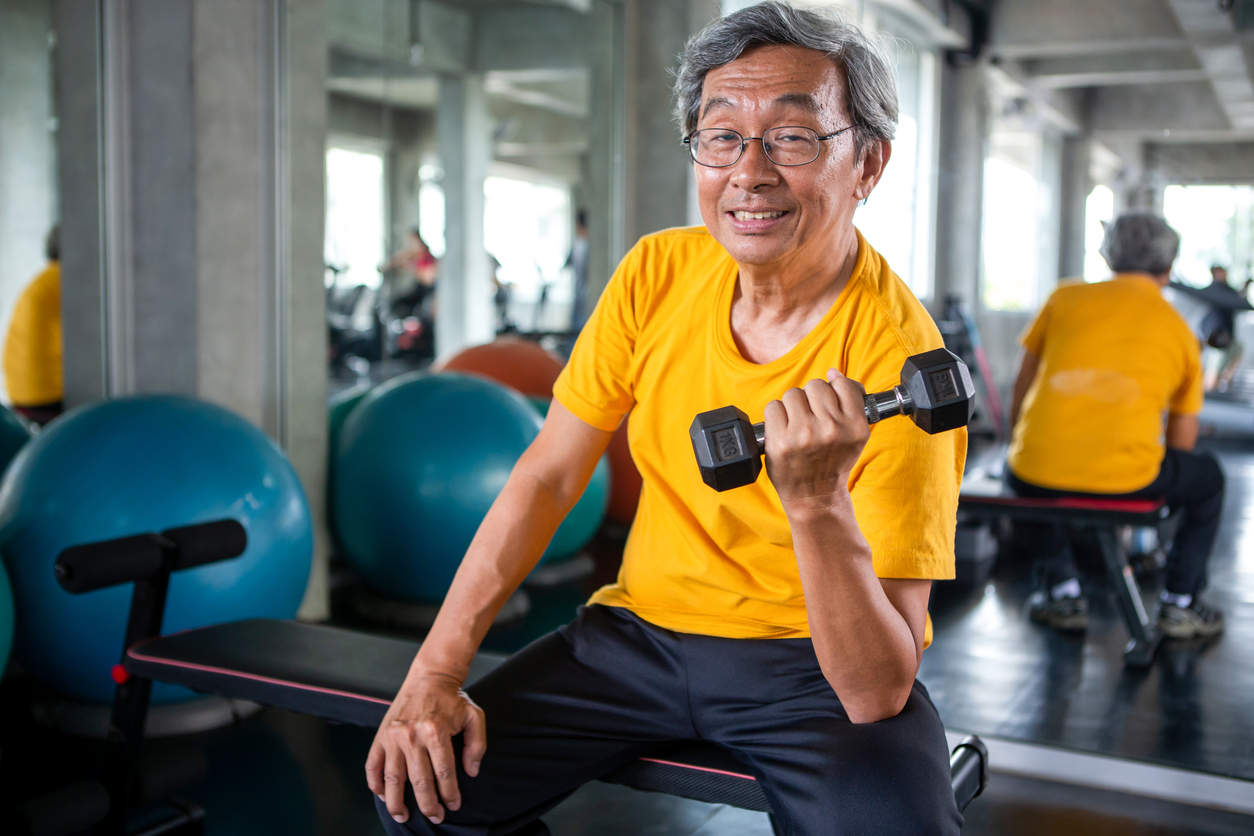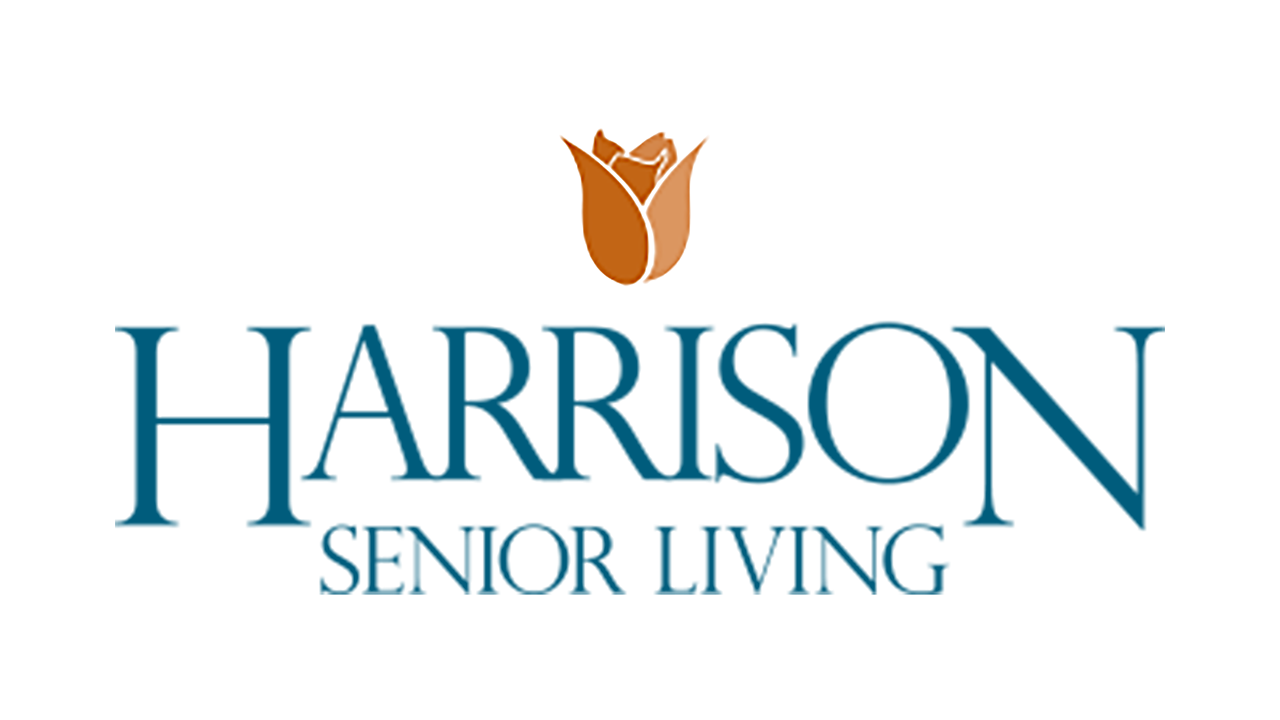5 Exercises for Seniors: How to Strengthen Muscles

Decreased muscle mass is a concern for many aging adults. It’s common for seniors to unconsciously reduce physical activity as they age. Once muscles weaken, older individuals will notice effects like slower mobility, pain with movement, lower range of motion, and general weakness. There are many exercises for seniors that promote muscle maintenance for long-term physical health.
The majority of seniors are not interested in workouts that build muscles, but most are interested in maintaining a healthy level of muscle mass as they age. Exercises for seniors that strengthen muscles are less about winning weightlifting competitions (though they do exist in senior age classes!), and more about sustaining healthy mobility, range of motion, and independence.
Many seniors do not even notice that they are losing muscle mass until they realize that it’s more difficult to participate in routine activities. Once it becomes tougher to stand up, walk a reasonable distance, or lift about 20 pounds, many individuals realize that they need to strengthen their muscles a bit.
Benefits of Strength Exercises for Seniors
Exercises that keep muscles healthy and strong generally support an active lifestyle. Seniors who pay attention to fitness tend to be physically and mentally healthy well into advanced age. The activities that help a senior sustain muscle structure are also activities that promote a vibrant social life, high self-esteem, and excellent physical health.
The physical benefits of strength exercises for seniors include healthy muscle mass, good vascular health, fluid mobility, and strong joints and organs. Exercise comes with great mental health benefits as well. Seniors who exercise generally report more satisfaction with their life and self-image, and they usually have an active social life.
The following 5 strength exercises are low-impact and can be easily integrated with an existing cardio routine for optimal impact. Be sure to combine physical activity with a healthy diet and sleep routine, and always review workout plans with a primary physician before getting started.
Resistance Band Scissor Toe Taps
A resistance band is a large wide rubber band that allows people to work with just a bit more than their own body weight. Bands come in different levels of resistance and can be a closed loop or a flat band.
Stand with a closed loop band of your preferred resistance level around your mid-thighs and your feet about hip-width apart. With a slight bend in your knees, back straight, and hands resting on the back of a chair for balance, lift one foot up and out to the side. Tap it on the floor once you feel a bit of resistance, and slowly move it back to starting position. Do sets of 10 on each foot, straightening up to rest for about 30 seconds in between.
Toe taps are a good balance exercise for seniors, as these moves will strengthen the backs of the legs and glutes for enhanced stability. To modify this exercise, start without a resistance band and work up to using the lowest level.
Weighted Overhead Press
A weighted overhead press is a great chair exercise for seniors to build arm and upper back strength. If you’ve been finding it a challenge to hold grandchildren, carry full laundry baskets, or transport grocery bags, this press will help.
While seated with feet flat on the floor and a straight back, hold a set of hand weights out to the sides with elbows bent at 90 degrees. Lift both hands overhead, bringing the weights most of the way together, then return to the original position. Do sets of 10 with 30 seconds of rest in between.
To modify this exercise, start with 1 pound hand weights, or no weights at all until you can do at least 2 sets with weights.
Glute Bridges
Glute bridges are great for strengthening the lower back and glutes, which makes them a good balancing exercise for seniors. Getting into and out of position safely is crucial for preventing injuries. Always roll from your side onto your back to get started, and roll from your back to your side when finished. A rolled up towel placed under the lower back will provide additional support.
From your back, bend your knees and place your feet on the floor a comfortable distance from your backside. With hands flat on the floor for balance support, lift your hips off the ground to make a straight 45 degree line from your knees to your shoulders. Squeeze your glutes at the top of the move before lowering back down to your back.
To modify this exercise, do fewer than 10 repetitions in a set and slowly build from there.
Dead Bugs
Dead bug is another move that involves laying flat on your back, but this one works the core muscles. The abdominal muscles support balance and help to protect the back, so this is a good exercise for mobility and preventing injuries.
Lay flat on your back with hips and knees bent at 90 degrees and arms straight up above your chest. Lower one arm straight back alongside your head while straightening and lowering the opposite leg to just above the floor. Return to the starting position and perform the move with the other arm and leg. Repeat sets of 10 with at least 30 seconds rest in between.
For additional back support, place a rolled up towel beneath the lower back. Always roll onto your back from your side and from your back to your side to get up. To modify this exercise, rest one foot on the floor with a bent knee and do a full set on one side, then switch sides after rest.
Wall Pushups
Upper body strength is difficult to maintain as we age. Outside of physical labor jobs, we simply do not need to lift very much in our daily lives. But if it’s getting more difficult to support your own body weight to sit down or stand up, some wall pushups will strengthen your arm and chest muscles.
Stand facing a wall with your palms flat against the surface at chest height and with your feet flat on the floor about hip-width apart. Push your body weight towards the wall, controlling your movement with your arms. Be sure to bend from your ankles, not at your hips. When your chest is about even with your elbows, push back out from the wall. Repeat sets of 10-12 of this move. Keep your movement under control; avoid pushing off the wall or falling towards it with any acceleration.
To modify this exercise, do fewer repetitions, or a shorter range of motion. Work your way up to the full move and set.
Summary
Strengthening muscles with low-impact resistance training is a great way to assure long-lasting mobility and independence. While some muscle mass deterioration is natural with age, a regular strength training routine will prevent frailty. If your current routine is missing resistance moves, try adding a few of these to keep your muscles healthy.
Back to Education Center
